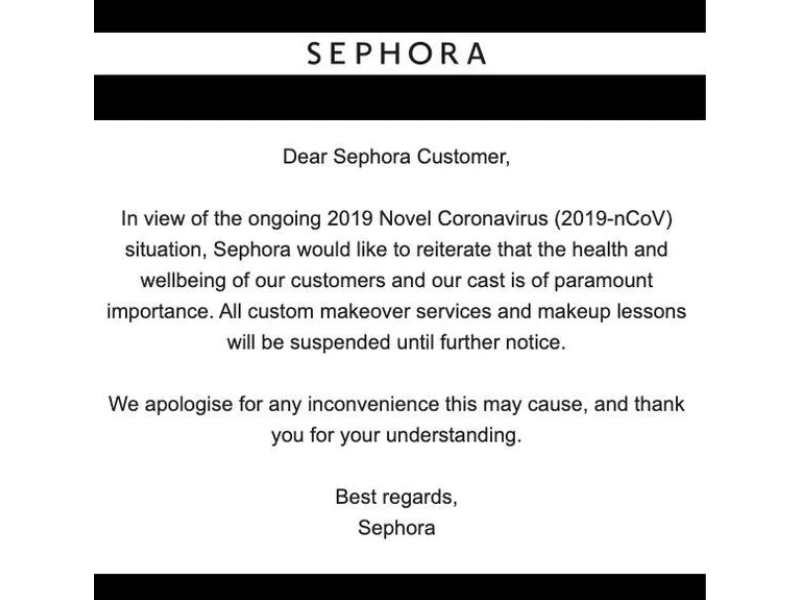By Bahar Etminan
In this rapidly morphing time of border closures, the disappearance of the Chinese tourist and growing local anxiety in light of the COVID-19 virus, brand custodians, marketing managers and sales teams need a solid Plan B.
It’s no secret that the Australian and New Zealand beauty industries have enjoyed a honeymoon with Chinese customers and abundant tourist sales from a weak Australian dollar. The heavy reliance on the Chinese consumer and other tourist sales, particularly for luxury and ‘clean’ Australian brands, has been a gift to retailers and brands for many years. These customers shored up the changes and decline in sales for former retail giants, boosted online sales and aided the proliferation of niche brands.
Brands need to ask: How relevant are my marketing and sales plans in this new age of low contact, hyper vigilance over hygiene and the absence of Chinese and other tourists?

When I started my career in beauty, as a traveller for Parfums Givenchy while I was at university, we received specialty training on selling to the Japanese. It was the early 90s and the Japanese tourist was king for luxury and beauty sales. We learned how to modify our service style, sell in multiple units and the art of gift wrapping. This reliance on Japanese customers came to an abrupt end when their economy tanked, and marketing managers were scrambling to create meaningful local activations to close the sales gap. Today the COVID-19 virus has led to a travel ban from China with many European and Middle Eastern countries to follow. Brands need to respond and adapt their strategy, fast.
The significance of this is great. For many luxury brands Chinese customers make up a disproportionally large percentage of their customer base in Australia. According to a research piece by Bain, referenced in Business Insider: “Chinese consumers accounted for around 35% of the total spend in the global luxury market in 2019 and 90% of the growth in global luxury goods sales.”
I’ve been in the beauty industry for over 25 years. I’ve worked on counters, imported and distributed 36 brands via my first business Brandmakers, launched Australia’s first distributor owned online beauty store Rescu Beauty Bar, and headed up two brands for Estee Lauder Group – Bobbi Brown and Origins.
For more than a decade I’ve been an online publisher and editor. More recently I’ve evolved to also become a micro influencer, speaker and consultant in this space. In 2018, I launched an online education platform and our first beauty course: Be Your Own Make Up Artist. In this time, I’ve seen first hand how cycles work and the danger of relying on narrow sources of sales. The only way to survive, and thrive, is to adapt, diversify your consumer base and always, always look after your core local customer.
This is a unique opportunity for brands to re-focus on Australian consumers. To create meaningful offers that incentivise the customers to shop online locally or discover your product in store. This is the time to update your businesses’ supply chain process and ask how will your brand touch and communicate with local customers? And most importantly, what changes do we make to our brand messaging to re-engage and strengthen connections with the local consumers like never before?
Sephora were first to cancel make up services and no doubt by the time this article is live, other brands and retailers will have followed suit, possibly removing all testers and significantly reducing the tactile sales and demonstration process.

What’s your CRM strategy? Are you working through your local data base and pro-actively speaking to your customers to answer their questions and offer them new ways to interact with your brand? What is your sampling strategy? Are you offering your local customers information and inspiration to consider and buy your brands even in a time of confusion and stress?
The old rules and marketing plans won’t apply. Agile companies will need to activate engaging strategies to speak to and sell to the local customer. They will need to invest in local media with meaningful audience relationships built over time on trust and relevance, investment and collaborations with local micro influencers with authentic audiences. Online events, webinars and streaming will replace in store activity and seminars. Delivering on trust, transparency and meaningful brand communication will be key.
The best and brightest marketing managers, training executives and retailers will be considering tools such as virtual reality and use of in store and online apps for BAs to help guide customers through shade selection, product selection and education in the absence of testers and application. The need for information and responding to consumer need for guidance won’t go away, it’s the how you deliver this that will need to adapt.
Already, travel bans and head count freezes are pushing companies to think smarter and to allocate resources differently. Budget cuts cover lost sales and will force innovative thinking and an entrepreneurial mindset.
As companies replace traditional meetings and training events with online education and video calls, reaching and selling to the customer will also need a re-think. The marketing spend will shrink and every dollar spent will demand compelling ROI.
What won’t change is the consumers desire and interest in grooming, self care and beauty. Remember that even in the times of crisis and depression, the lipstick index stands the test of time. Men and women want to look good, smell good and ultimately feel good. And that’s what we do. We are in the look good and feel beautiful business so now, more than ever it’s time to re-think how we can deliver our product, services and messaging in this new climate of rapid change, low contact and high anxiety.
Bahar Etminan is the author of Rescu Me! A Makeover Guide for the Life More Fabulous, publisher of women’s lifestyle site www.rescu.com.au and founder of online education platform www.rescumeacademy.com including an online beauty education course Be Your Own Make Up Artist.

